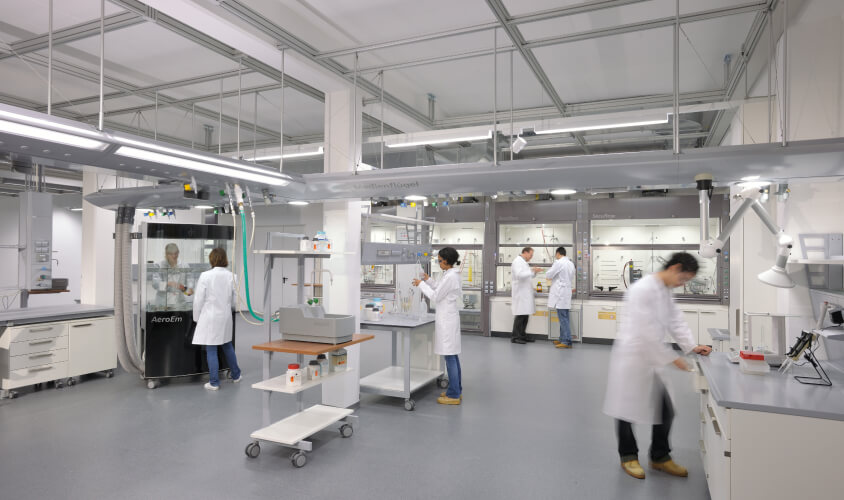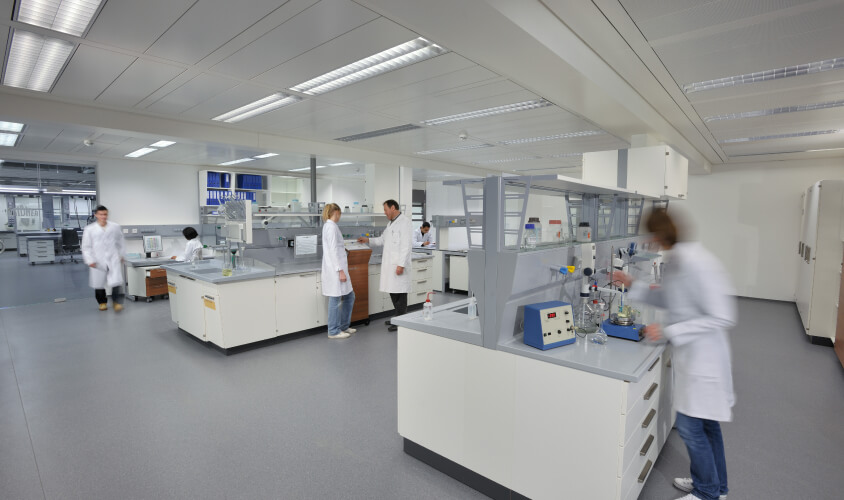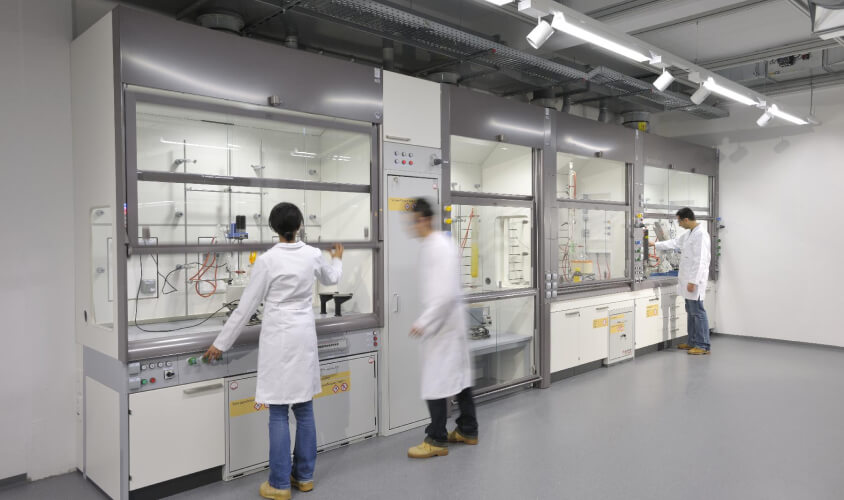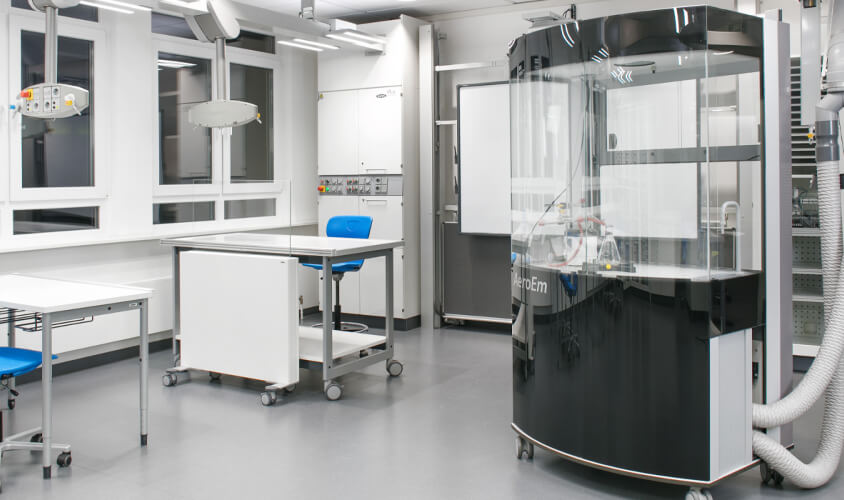WALDNER – Laboratory Furniture
Analysis offers the service of laboratory design and equipping with laboratory furniture WALDNER, as we have been the company’s exclusive distributor for the territory of Serbia, North Macedonia, Montenegro and Bosnia and Herzegovina since 2002.
Waldner laboratory furniture is bright, open, communicative and whatever you make of it, due to its modular concept. Whether you need benches, sinks, storage hoods, special cabinets, sliding elements, service modules or supply and waste disposal of chemicals, Waldner’s modular concept lets you create countless design versions – leaving functional latitude for unlimited possibilities. You are the one who defines the individual parameters for your specific needs, e.g. whether you need fume hoods or not, whether your work benches should have a load-bearing capacity of over 200 kg, etc. The laboratory furniture system with its flexible application units can easily be adapted to new situations in the lab. This way Waldner can provide a large number of different design and furniture variants for every functional area of the laboratory. Finally, Waldner has redesigned their laboratory furniture based on innovative ideas, sophisticated detailed solutions and high-quality materials, meeting the user requirements with respect to ergonomics, maximum operational safety and profitability more than ever.
In the production portfolio, Waldne can provide:
- Service modules (for Island benches, Suspended modules, wall modules….)
- Laboratory tables with a wide selection of work surfaces of different resistance
- Laboratory sinks
- Laboratory cabinets for different purposes
- Chemical waste handling systems
Waldner is especially known for their laboratory fume hoods.
Fume hoods protect people working in laboratories in many different ways. They prevent the release of substances harmful to health into the lab and environment, and hence act as a safe barrier between users and their experimental set-ups. Waldner keeps effectively optimising the air flow rate of their fume hoods, saving up to 33 % energy. This is achieved by using the Secuflow technology. Moreover, ergonomics is put a lot of thought into. Height-adjustable, glazed transparency, intelligent details, highly functional and digitally networked, all of these can be tailored to suit the user’s needs. Waldner has the right laboratory fume hood for any application – whether you require a bench-mounted fume hood, or a walk-in fume hood; whether you have specific requirements regarding the internal lining or need an explosion-protected design. The application determines the concept and equipment of the fume hood, as well as the appropriate material. Owing to their modular system, Waldner fume cupboards can be ideally adapted to the dimensions and conditions within any lab.
The program of laboratory fume hoods includes:
- standard fume hoods
- fume hoods for special purposes (work with aggressive inorganic acids)
- walk-in fume hoods
- fume hoods for work with radio isotopes
- Small mobile fume hoods
Laboratory design
Each laboratory should be organized to fully meet the requirements and needs of users. However, laboratory infrastructure usually doesn’t keep up with the development of science, laboratory equipment and work procedures. Laboratory reconstructions are imposed as a solution, but how to ensure that this reconstruction is efficient, without major interruptions in the work process, and that the new solution is flexible for future development?
Analysis and WALDNER offer you a solution, in direct contact with you, through the elaboration of the following phases:
- Evaluation of the current situation, needs and desires of users
- Evaluation of the working and organizational process of users
- Evaluation of the needs of the existing laboratory equipment of the user and the equipment that is to be procured in the future
- Evaluation of plans for further development of the laboratory – possibilities of easy transformation and adaptation to new techniques
- Production of 2D and 3D views of the conceptual design



